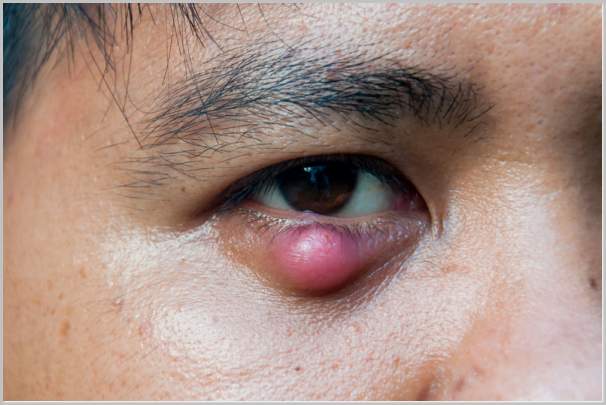Children and even many adults are prone to styes. A stye (also called sty or hordeolum) is an infection of a sebaceous (oil) gland at the base of the eyelashes. It presents itself as a small lump caused by minor swelling and is normally accompanied by redness around the infected area. They are almost always harmless and they do not cause any damage to your eye or impair your vision in any way.
However, they are inconvenient and unsightly so they need to be treated to make sure that the infection does not spread.

Myths on Stye Treatment
There are a lot of myths and wives’ tales surrounding the treatment of styes. These include applying after shave to the infected area. This should never be done because it could cause permanent damage to both your eyeball and your vision.
Another wives’ tale is to rub a gold ring on the stye. This is said to cure the infection. There is no evidence to support this claim and it could cause the infection to spread because you are rubbing it. The ring will also transfer more germs to the eye area when it needs to be kept clean.
How to Get Rid of a Stye
It is usually harmless and home treatment is the first and may be the only option needed to treat it. You can begin the treatment process by using a clean warm washcloth or compress on the stye for 10 minutes. This should be done four to six times a day or as needed. This will relieve any painful symptoms and will facilitate the draining process by unblocking the clogs. A stye usually swells for approximately 3 days before rupturing and heals within a week. Any temptation to squeeze or to press the stye to speed up the drainage should be avoided. There are over-the-counter ointments, eye drops and solutions available to further alleviate the pain. It is highly recommended to speak to your local pharmacist before purchasing any over-the-counter product.
An Effective Home Remedy to Get Rid of Styes
* If you are treating a stye then you need to be very conscious of your hygiene because any more germs that get into the eye can cause other infection.
The first thing you will need to do is wash your hands thoroughly with an anti bacterial hand wash. make sure that your nails are also clean because they carry a lot of dirt. Scrub them with a nail brush to ensure a thorough clean. If you are treating someone else then you should apply gloves to prevent the spread of infection.
Fill a clean bowl with hot water. If you use water that has been boiled then you will need to make sure it has cooled enough. Soak a clean flannel in the water for a moment. Remove the flannel and then ring it out to remove the excess water.
Apply the flannel directly onto your eyelid. You can either place it on the affected area alone or over the whole eyelid area. You must keep your eye closed whilst the flannel is on it.
Leave the flannel on the eyelid for around ten minutes. This will give the hot water a chance to soak in. Repeat this up to four times a day for the best results.
Never squeeze the stye because you will spread the infection and you could cause it to go deeper into the skin. If it has not cleared up within four days of treatment, then consult your doctor.
Medical Treatment
The next option for stye treatment is a visit to your doctor. The following conditions will necessitate the attention of your health professional:
If the stye continues to swell after 3 days of home treatment and continues after a week, a stubborn and relentless stye can develop into a chalzion: If it is becomes extremely painful and grows large quickly. If the stye drains pus. If the swelling and redness spreads inside and outside the eyelid. If the stye causes vision problems.
The doctor may need to lance or cut open the stye in order to allow it to drain. The doctor may also use local anesthesia or general anesthesia for children during the procedure. Steroid injections are useful for the inflammation caused the stye.
Contact lenses and eye makeup should not be used during the treatment process.
How to Prevent
There are easy and helpful tips that everyone can use to prevent future outbreaks. Do not share makeup or eye makeup tools with others. Eye makeup tools should be washed properly. Old and unsanitary makeup should be discarded. Sometimes using too much eye makeup can induce a stye to develop. There has also been links between increased stress and development of a stye, although the mechanics are not well understood yet. Avoid touching or rubbing the eye or the area surrounding the area.

